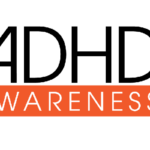How can I manage my ADHD at work?
Staying focused, completing tasks on time, remembering important details, and staying organized can be difficult if you have ADHD.
Dealing with ADHD in the workplace can seem like an endless struggle. But with the right strategies, adults with ADHD can stay focused, productive, and organized. While they may not always be able to perform at the level they’d like, they can still see a huge improvement in productivity and build positive habits that diminish the negative impacts ADHD can have in the workplace.
Our Experienced Team of Psychiatrists Can Help!
Our highly-trained psychiatrists and therapists offer a comprehensive and confidential approach to private, outpatient psychiatric care for the treatment of ADHD. Whether this is your first time seeking psychiatric care or if you are seeking a new provider, Novum Psychiatry can help. In-person and telehealth appointments available. We accept health insurance.
Here are some practical strategies for managing ADHD at work:
Strategy #1: Set Specific Schedules and Deadlines
Symptoms of ADHD in the workplace can have a negative impact on work performance when you keep falling behind schedule and miss small deadlines. You’re forced to compensate by cramming to get all your work done at once, which makes you want to procrastinate at the thought of the enormous task ahead of you. This vicious cycle can result in a lot of stress and struggle.
To make sure you stay on top of things, start by setting specific schedules. Instead of saying that you’ll work on a specific task in 5 minutes, write down the exact time you plan to work on the task, for example, 2:15 PM. If another task gets in the way of your schedule, simply reschedule that specific task to another time.
You also need to set deadlines in the same manner. Don’t assume that you’ll be finished with a task in 30 minutes. Set a deadline for 2:30 PM if you’re starting the task at 2:00 PM. You need to be very specific about your intent as your mind will generalize the timeframe.
Strategy #2: Break Down Projects into Manageable Chunks
One of the reasons that people with ADHD tend to procrastinate on larger scale projects is that they see it as one big gargantuan task. It can be intimidating and trigger emotions that make you want to cope or escape by doing something else. To overcome this, you need to break down large projects into manageable chunks.
It looks and feels more feasible to go through a list of ten different tasks than finish one big project. It also helps to make a to-do list out of these tasks. As you start crossing out one task after another from the list, the project will seem less of a challenge to complete. It will also give you a lot of emotional momentum by eliminating tasks.
Strategy #3: Eliminate Distractions
One of the best tips for organization and control is to eliminate every possible distraction. If you have to work on the computer, turn off your phone so that nobody messages or calls you. If you’ve been known to browse the Internet unconsciously, download one of those apps that block access to the websites you commonly visit.
If your desk is full of clutter and things that can distract you, remove everything that is unnecessary. Only leave the things you need to complete the task. If possible, you should figure out a way to prevent outside noise from coming into your work corner. You can get padded walls that reduce sound or even use earplugs.
Strategy #4: Work in Short Time Blocks
Managing ADHD on the job can be a second job in itself. The challenge lies in keeping your focus, staying motivated, and eliminating distractions. One way to deal with these challenges is to work in short time blocks. Instead of committing to working one hour on something, break that down into 15-minute intervals.
Set a timer for 15-minutes and work on the task at hand until the timer rings. Then take a five-minute break before the next 15-minute block. The point of this approach is to avoid straining your mind by having it focus for long periods. It also gives your mind space to wander for a while and recover until the next time block.
Strategy #5: Have the Right Tools in Place
A helpful way to manage ADHD at work is to bring the right tools to ensure effective learning. If you need to learn new things, have a recording device and a notebook so that you can recall what you’ve learned. To keep track of everything, use planners to keep to your schedule and sticky notes to remind you of important things. You can also download apps with time-based alarms, use notebooks to build checklists, and place a large clock in front of your workspace to help you stay on schedule.
Strategy #6: Plan Ahead with Your Medications
If you are taking medication for your ADHD, it’s important to plan ahead to make sure they are going to be effective. You want to time your medication so that it lasts during your work schedule. You also need to have an alarm in place to remind you to take your medication if you are taking multiple doses. Medication does have its limitations, so you should still be practicing the other tips you’ve learned in this article.
If you feel you or your loved one is dealing with ADHD and need the help of a qualified psychiatrist in the Massachusetts communities of Plainville, Sudbury, and surrounding areas please give us a call 978-252-0873 for a confidential evaluation.
We can help diagnose the kind of ADHD you or your loved one is facing, manage it with the appropriate medication, and provide strategies to help manage the condition. Coping with ADHD can be difficult, but with the right strategies and treatment plan in place, it can be successfully managed.







